
Chase Promenade is an open-air, tree-lined, pedestrian walkway that opened July 16, 2004. It is part of Millennium Park, which is located in the Loop community area of Chicago, Illinois in the United States. The promenade was made possible by a gift from the Bank One Foundation. It is 8 acres (3.2 ha) and used for exhibitions, festivals and other family events as well as private rentals.
Visual arts of Chicago refers to paintings, prints, illustrations, textile art, sculpture, ceramics and other visual artworks produced in Chicago or by people with a connection to Chicago. Since World War II, Chicago visual art has had a strong individualistic streak, little influenced by outside fashions. "One of the unique characteristics of Chicago," said Pennsylvania Academy of Fine Arts curator Bob Cozzolino, "is there's always been a very pronounced effort to not be derivative, to not follow the status quo." The Chicago art world has been described as having "a stubborn sense ... of tolerant pluralism." However, Chicago's art scene is "critically neglected." Critic Andrew Patner has said, "Chicago's commitment to figurative painting, dating back to the post-War period, has often put it at odds with New York critics and dealers." It is argued that Chicago art is rarely found in Chicago museums; some of the most remarkable Chicago artworks are found in other cities.
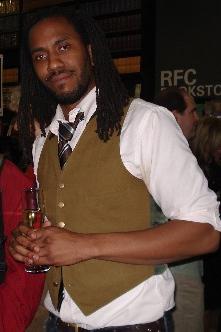
Rashid Johnson is an American artist who produces conceptual post-black art. Johnson first received critical attention in 2001 at the age of 24, when his work was included in Freestyle (2001) curated by Thelma Golden at the Studio Museum in Harlem. He studied at Columbia College Chicago and the School of the Art Institute of Chicago and his work has been exhibited around the world.

Walter Sanford, also known as Sanford,, was an American artist who worked in a range of styles and influences using traditional media such as paint, ink, crayon and pencil. His artworks include collages, cartoons, pencil drawings, linoleum-cuts, woodcuts, sculptures, paintings, and portraits. He was one of the first and only black social realism and abstract expressionist artists of the 20th century. He was heralded "Black Picasso" and "Detroit's Picasso" for his cubist figure paintings and in 1958 he won the Prix de Paris La Grande Saison de Paris at the Raymond Duncan Galleries. In Detroit, he opened the first black-owned art gallery and exhibited at the first Negro Art Exhibition and Negro History Week and was hailed as one of Michigan's foremost modern art painters in 1952.

Richard Wetzel is an American artist. He is best known for his oil paintings but also has exhibited collages and sculpture. In 1969 and 1970, Wetzel exhibited with the Chicago Imagists, a grouping of Chicago artists who were ascendant in the late 1960s and early 1970s.
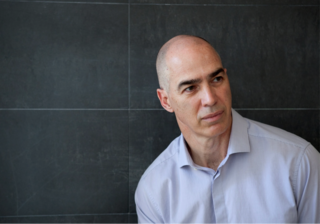
David Klamen is an American artist and academic. He is known for visually diverse paintings that meld technical mastery with postmodern explorations of the processes by which humans understand and interpret experience. Klamen has exhibited across the United States, Europe and Asia, including individual shows at the Museum of Contemporary Art Chicago (MCA), the Chazen Museum of Art and the Cedar Rapids Museum of Art, and major group exhibitions at the Metropolitan Museum of Art, the Art Institute of Chicago, the Museum of Contemporary Art, San Diego, the Indianapolis Museum of Art, and the Crocker Art Museum. His work sits in the permanent collections of the Metropolitan Museum of Art, the Los Angeles Museum of Contemporary Art and the Whitney Museum of American Art, among others. Klamen has been based in Chicago for most of his career, which includes being an educator for over thirty years, primarily at Indiana University Northwest, where he was appointed Founding Dean, School of the Arts in 2018.
Susan Michod is an American feminist painter who has been at the forefront of the Pattern and Decoration movement since 1969. Her work "consists of monumental paintings [which are] thickly painted, torn, collaged, spattered, sponged, sprinkled with glitter and infused with a spirit of love of nature and art," the art critic Sue Taylor has written.

Eve Josephson Garrison (1903-2003) was a modernist painter. Her early works focused on a realist style including landscapes and cityscapes, specifically depicting Chicago, Colorado, and Mexico. She also painted nudes and portraits and increasingly abstract and textured art in later life. She suggested creating work for juried shows and annuals was not the way "to be a great artists!" Instead, she began making work that felt was more expressive of her ideas. In the sixties she began making work that she termed "sculptural relief oil paintings." This involved a process of embedding objects such as seeds, branches, glass, and string into the paint. During the period she was producing more abstract work she had solo exhibitions in New York, Detroit, Milwaukee, Miami, Paris, and London.
Julia Fish is an American artist whose paintings have a deceptive simplicity. She paints in oil on stretched rectangular canvases of varying size. By means of close observation of everyday subjects—leaves of a tree seen through a window, a section of floor tiles, an old fashioned light fixture— she makes, as one critic says, "quiet, abstract manifestations of observed realities." She is a studio artist who paints not what she sees in an instant but rather what she observes continuously, day after day. The result, she says, is not so much temporal as durational. Her paintings compress many instances of observation so as to become, as she sees it, "a parallel system to a lived experience." The paintings lack spatial orientation and, as a critic says, can "be described as both highly realistic and abstract without compromising either term." In 2008, Alan G. Artner, writing in the Chicago Tribune, said "This is work of small refinements and adjustments. The world of everyday things generates it, but Fish's qualities of seeing and touch elevate the things to a plane on which they leave behind their humble character."

Corey Postiglione is an American artist, art critic and educator. He is a member of the American Abstract Artists in New York, and known for precise, often minimalist work that "both spans and explores the collective passage from modernism to postmodernism" in contemporary art practice and theory. New Art Examiner co-founder Jane Allen, writing in 1976, described him as "an important influence on the development of contemporary Chicago abstraction." In 2008, Chicago Tribuneart critic Alan G. Artner wrote "Postiglione has created a strong, consistent body of work that developed in cycles, now edging closer to representation, now moving further away, but remaining rigorous in approach to form as well as seductive in markmaking and color."

Don Baum was an American curator, artist and educator, most known as a key impresario and promoter of the Chicago Imagists, a group of artists that had an enduring impact on American art in the later twentieth century. Described by the Museum of Contemporary Art, Chicago (MCA) as "an indispensable curator of the Chicago school," Baum was known for lively and irreverent exhibitions that offered fresh perspectives combining elements of Surrealism and Pop and that broke down barriers between schooled and untrained, or so-called outsider artists. From 1956 to 1972, Baum was exhibitions director at Chicago's Hyde Park Art Center. It was there, in the 1960s, that he became involved with a group of young artists he exhibited as "Hairy Who" that later expanded to become the Chicago Imagists. That group included Ed Paschke, Jim Nutt, Roger Brown, Gladys Nilsson, and Karl Wirsum. Baum mounted two major shows at the MCA that featured the emerging artists in their first museum exhibitions: "Don Baum Sez: 'Chicago Needs Famous Artists'" (1969) and "Made in Chicago" (1973), which shaped a vision of Chicago's art world as a place of meticulous craftsmanship and vernacular inspiration.
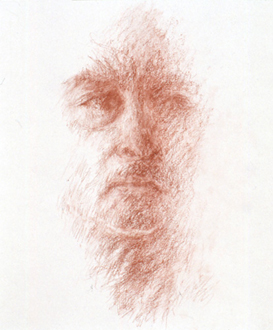
Arthur Lerner is an American artist, known for his atmospheric figurative paintings and drawings, landscapes, and still lifes. He is sometimes described as a realist, but most critics observe that his work is more subjective than descriptive or literal. Associated with Chicago's influential "Monster Roster" artists early in his career, he shared their enthusiasm for expressive figuration, fantasy and mythology, and their existential outlook, but diverged increasingly in his classical formal concerns and more detached temperament. Critics frequently note in Lerner's art a sense of light that evokes Impressionism, delicate color and modelling that "flirts with dematerialization," and the draftsmanship that serves as a foundation for all of his work. The Chicago Tribune's Alan Artner lamented Lerner's comparative lack of recognition in relation to the Chicago Imagists as the fate of "an aesthete in a town dominated by tenpenny fantasts." Lerner's work has been extensively covered in publications, featured in books such as Monster Roster: Existential Art in Postwar Chicago, and acquired by public and private collections, including those of the Smithsonian Institution, Art Institute of Chicago, Smart Museum of Art, and Mary and Leigh Block Museum of Art, among many.

John Himmelfarb is an American artist, known for idiosyncratic, yet modernist-based work across many media. Diverse influences ranging from Miró, Matisse and Picasso to Dubuffet, New York school artists like de Kooning, Guston, and Pop artists inform his work, described by critics and curators as chaotically complex and tightly constructed. He often employs energetic, gestural line, dense patterns of accumulated shapes, and fluid movement between figuration and abstraction, using strategies of concealment and revelation to create a sense of meaning that is both playful and elusive. His work is also unified by "a circulating library" of motifs and organizing structures, such as geographic and urban mapping, abstracted natural and industrial forms, and language systems. Assessing him at mid-career, New Art Examiner’s Andy Argy wrote "Himmelfarb’s art is original […] His unabashed immersion in graphic art, emphasizing drawing over painting, has earned him an important place among artists who make drawings into major aesthetic statements." Himmelfarb next turned to monumental paintings that critic Christopher Moore called joyful, luminous, and frenetic pyrotechnical displays. In 2006, he began to devote considerable studio time to sculpture that curator Gregg Hertzlieb described as an expression of the "human need for play and (our) enduring fascination with metamorphosis and transformation."
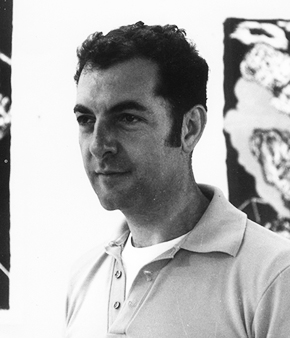
Seymour Rosofsky was an American artist, who has been described as one of the key figures in twentieth-century Chicago art. He emerged in the late 1940s at the School of the Art Institute of Chicago, one of several G.I. Bill veterans, including Leon Golub, Cosmo Campoli and H. C. Westermann, who would join Don Baum, Dominick Di Meo, June Leaf, and Nancy Spero to form the influential movement later dubbed the "Monster Roster" by critic Franz Schulze, which was a precursor to the more well-known Chicago Imagists. Like others in the group, Rosofsky was drawn to the unsettling, macabre side of Surrealism, initially creating gestural, expressionist renderings of grotesque, existentially angst-ridden figures in isolated or uncomfortable situations, that gave way in the 1960s to more fantastical, observational paintings that examined power, politics and domestic relationships in an unflinching way.

David Sharpe is an American artist, known for his stylized and expressionist paintings of the figure and landscape and for early works of densely packed, organic abstraction. He was trained at the School of the Art Institute of Chicago and worked in Chicago until 1970, when he moved to New York City, where he remains. Sharpe has exhibited at the Whitney Museum of American Art, Art Institute of Chicago, Museum of Contemporary Art Chicago (MCA), The Drawing Center, Aldrich Museum of Contemporary Art, Indianapolis Museum of Art, and Chicago Cultural Center, among many venues. His work has been reviewed in Art in America, ARTnews, Arts Magazine, New Art Examiner, the New York Times, and the Chicago Tribune, and been acquired by public institutions such as the Art Institute of Chicago, Scottish National Gallery of Modern Art, MCA Chicago, Smart Museum of Art, and Mary and Leigh Block Museum of Art, among many.
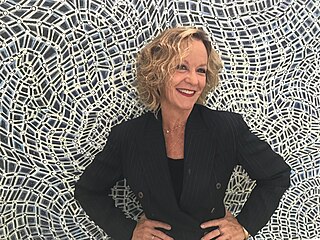
Susan Sensemann is an American artist, educator and arts administrator, best known for her detailed, largely abstract patterned paintings and photomontages reflecting gothic, baroque, spiritual and feminist sensibilities. She has exhibited her work at venues including the Art Institute of Chicago, A.I.R., The Living Art Museum (Reykjavík), Indianapolis Art Center, Chicago Cultural Center, and Art Institute of Boston, on four continents. Her work has been widely reviewed and resides in numerous private, university and corporate collections. Sensemann is known as a versatile and prolific creator, whose ideas have led her to explore diverse painting materials, media, subject matter, and styles from abstraction to realism. Critics note her work's densely packed compositions, shallow fields of oscillating space, complex tactile surfaces, and sensuous color and linearity. James Yood wrote that Sensemann's abstract paintings were "fraught with meaning, charged with value, and seething with import" in their spiritual seeking. Art historian Leisa Rundquist described her photomontage self-portraits as "strangely sensual, yet disturbing" images drawn from "the depths of the unconscious."
Sam Himmelfarb was a Russian Empire-born, American artist and commercial exhibit designer, known for his modernist-influenced paintings of everyday people and urban scenes. He also designed the Frank Lloyd Wright-inspired Samuel and Eleanor Himmelfarb Home and Studio in Winfield, Illinois, which is listed on the National Register of Historic Places. Himmelfarb studied art at the Art Students League and National Academy of Design in New York and at the Wisconsin School of Fine and Applied Arts. He initially painted in a realist style influenced by the Ashcan School, which gave way to more modernist, increasingly abstract styles. His paintings appeared in exhibitions at the Art Institute of Chicago (AIC), Terra Museum of American Art, Milwaukee Art Institute, and Arts Club of Chicago, and in circulating shows from the American Federation of Arts, among other venues. He received awards from the AIC, Wisconsin State Fair and Milwaukee Art Museum, and his work belongs to the collection of the latter, and those of the Illinois State Museum, Block Museum, and Arkansas Art Center, among others. Himmelfarb was married to the artist and educator, Eleanor Himmelfarb (1910-2009); their son, John Himmelfarb, and grandchild, Serena Aurora Day Himmelfarb, are also artists.

Frank Piatek is an American artist, known for abstract, illusionistic paintings of tubular forms and three-dimensional works exploring spirituality, cultural memory and the creative process. Piatek emerged in the mid-1960s, among a group of Chicago artists exploring various types of organic abstraction that shared qualities with the Chicago Imagists; his work, however relies more on suggestion than expressionistic representation. In Art in Chicago 1945-1995, the Museum of Contemporary Art, Chicago (MCA) described Piatek as playing “a crucial role in the development and refinement of abstract painting in Chicago" with carefully rendered, biomorphic compositions that illustrate the dialectical relationship between Chicago's idiosyncratic abstract and figurative styles. Piatek's work has been exhibited at institutions including the Whitney Museum, Art Institute of Chicago, MCA Chicago, National Museum, Szczecin in Poland, and Terra Museum of American Art; it belongs to the public art collections of the Art Institute of Chicago and MCA Chicago, among others. Curator Lynne Warren describes Piatek as "the quintessential Chicago artist—a highly individualistic, introspective outsider" who has developed a "unique and deeply felt world view from an artistically isolated vantage point." Piatek lives and works in Chicago with his wife, painter and SAIC professor Judith Geichman, and has taught at the School of the Art Institute of Chicago since 1974.
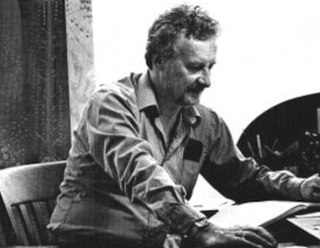
Richard Loving (1924–2021) was an American artist and educator, primarily based in Chicago, Illinois. He gained recognition in the 1980s as a member of the "Allusive Abstractionists," an informal group of Chicago painters, whose individual forms of organic abstraction embraced evocative imagery and metaphor, counter to the dominant minimalist mode. He is most known for paintings that critics describe as metaphysical and visionary, which move fluidly between abstraction and representation, personalized symbolism taking organic and geometric forms, and chaos and order. They are often characterized by bright patterns of dotted lines and dashes, enigmatic spatial fields, and an illuminated quality. In 2010, critic James Yood wrote that Loving's work "mull[ed] over the possibilities of pattern and representation, of narrative and allegory" to attain a kind of wisdom, transcendence and acknowledgement of universals, "seeking understanding of self within the poetics of the physical world."

Judith Raphael is an American figurative painter and educator based in Chicago. She is known for provocative depictions of childhood, particularly contemporary girlhood and its passage toward adulthood. This work emerged in the wake of feminism, and in style and content, was influenced by figurative painters such as Paula Rego, Balthus and Lucian Freud. Her paintings often recast heroic art-historical portrayals of men with contemporary girls in order to redress the paucity of strong female icons in Western art. Writer Carol Becker said of Raphael's later portraits, "[her] girls are different races and sizes, and each one’s face and posture is unique, but they share attitude. Although they are hip, they seem not yet secure in who they are or what they are about; they appear to be trying to construct their identities."





















